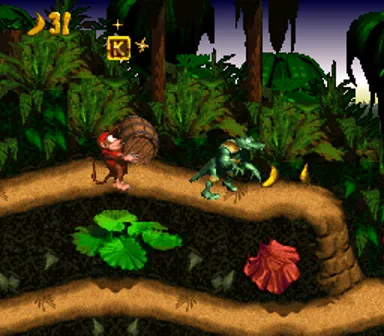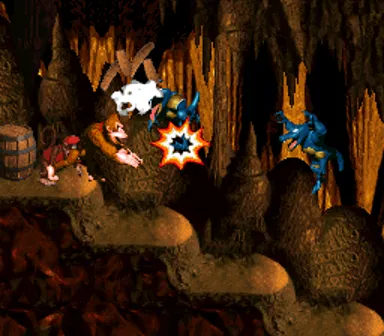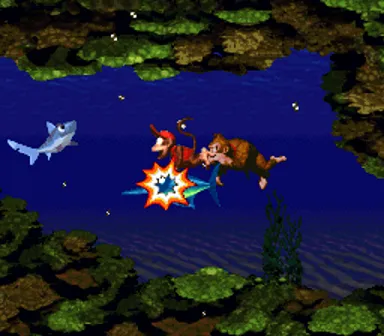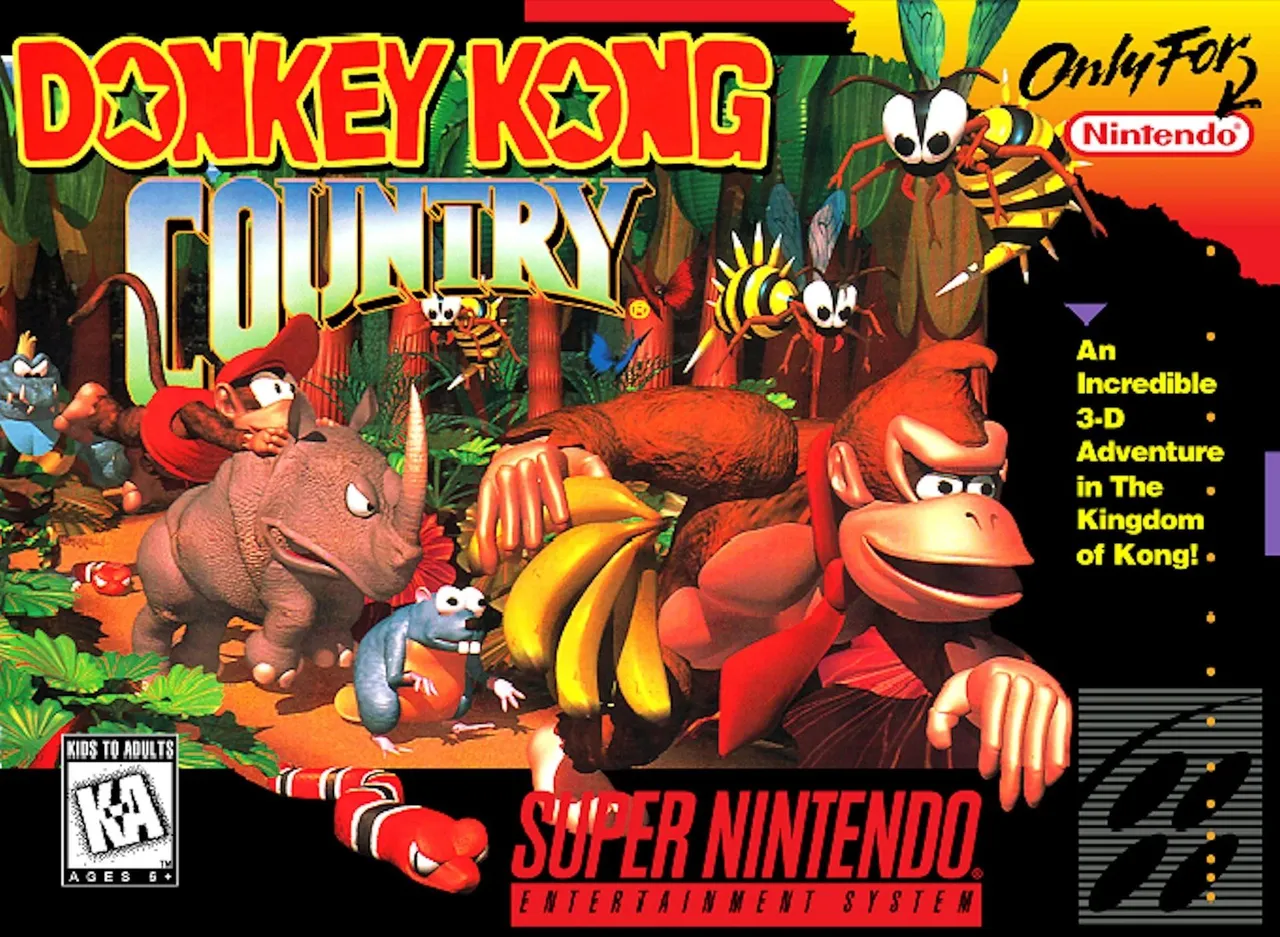This post is avaliable in both English and Spanish (translated with DeepL). Screenshots captured by myself.
Este post está disponible en ambos Inglés y Español (traducido con DeepL). Fotos capturadas por mí.
English
Donkey Kong Country is a game that almost needs no introduction: Developed and released in the 90s for the Super Nintendo between a partnership with Rare and Nintendo, it was THE Donkey Kong game that established the character's trademark appearance (style and his necktie) with its success. The first thing that always pops out from this game are the visuals, which were done in a quite ingenious way.

As Rare was playing with CGI graphics on workstations back then for Killer Instinct, they thought on applying the same technique for DKC: Pre-rendering models and backgrounds then translating them into the Super Nintendo. While KI on SNES suffered severe cuts from the amount of frames and colors as it was ported from Arcade, DKC was quite the opposite as it was an original project for the console, so there was a lot of effort into making everything look smooth and colorful.

The graphics aren't the only thing to praise though. Up to this day, the soundtrack is still considered among some of the best in gaming history...and it is hard to not see why. Many of the songs were harmonic and atmospheric (like the underwater stages), others were only atmospheric but with a tone of creepy (caves and mines), but other songs also had quite a lot of energy in them. In particular, the jungle theme in this game would feature many times in the Smash Bros franchise.

Gameplay-wise it feels quite snappy and fast: You can run and bounce off enemies like in Mario, but everything feels much faster (mostly because of the smaller view). You can pick up and throw barrels (where you can sometimes find your partner; each one acts as a life point and you die if you lose both), jump and be shot from cannon barrels, riding a minecart...the core of the gameplay is well done, but it is the level design that puts a bit of an infamous reputation in that you really need to react at all moments to survive.

In the end, it is a fantastic classic that holds up in presentation even despite its age, feels satisfying to play, and it will definitely give you a challenge to spend your time with. And of course, this game's success would end up spawning two more sequels on the SNES, and later on two revivals on the Nintendo Wii/Wii U.

Español
Donkey Kong Country es un juego que casi no necesita presentación: Desarrollado y lanzado en los años 90 para Super Nintendo entre una asociación con Rare y Nintendo, fue EL juego de Donkey Kong que estableció con su éxito el aspecto característico del personaje (estilo y su corbata). Lo primero que siempre salta a la vista de este juego son los efectos visuales, que se hicieron de una manera bastante ingeniosa.

Como Rare estaba jugando con los gráficos CGI en las estaciones de trabajo por aquel entonces para Killer Instinct, pensaron en aplicar la misma técnica para DKC: pre-renderizar los modelos y fondos y luego trasladarlos a la Super Nintendo. Mientras que KI en SNES sufrió graves recortes en la cantidad de fotogramas y colores al ser portado desde Arcade, DKC fue todo lo contrario, ya que fue un proyecto original para la consola, por lo que se hizo un gran esfuerzo para que todo tuviera un aspecto suave y colorido.

Sin embargo, los gráficos no son lo único que hay que alabar. A día de hoy, la banda sonora sigue estando considerada entre las mejores de la historia de los videojuegos... y es difícil no ver por qué. Muchos de los temas eran armónicos y atmosféricos (como las fases submarinas), otros eran sólo atmosféricos pero con un tono espeluznante (cuevas y minas), pero otros temas también tenían bastante energía. En particular, el tema de la selva de este juego aparecería muchas veces en la franquicia Smash Bros.

La jugabilidad es bastante ágil y rápida: Puedes correr y rebotar contra los enemigos como en Mario, pero todo se siente mucho más rápido (sobre todo por la vista más pequeña). Puedes coger y lanzar barriles (en los que a veces puedes encontrar a tu compañero; cada uno actúa como un punto de vida y mueres si pierdes los dos), saltar y ser disparado por barriles de cañón, montar en un minecart... el núcleo de la jugabilidad está bien hecho, pero es el diseño de los niveles el que pone un poco de mala fama en que realmente necesitas reaccionar en todo momento para sobrevivir.

Al final, es un clásico fantástico que se mantiene en la presentación incluso a pesar de su edad, se siente satisfactorio para jugar, y definitivamente le dará un reto para pasar su tiempo. Y por supuesto, el éxito de este juego acabaría generando dos secuelas más en la SNES, y más tarde dos reposiciones en la Nintendo Wii/Wii U.

